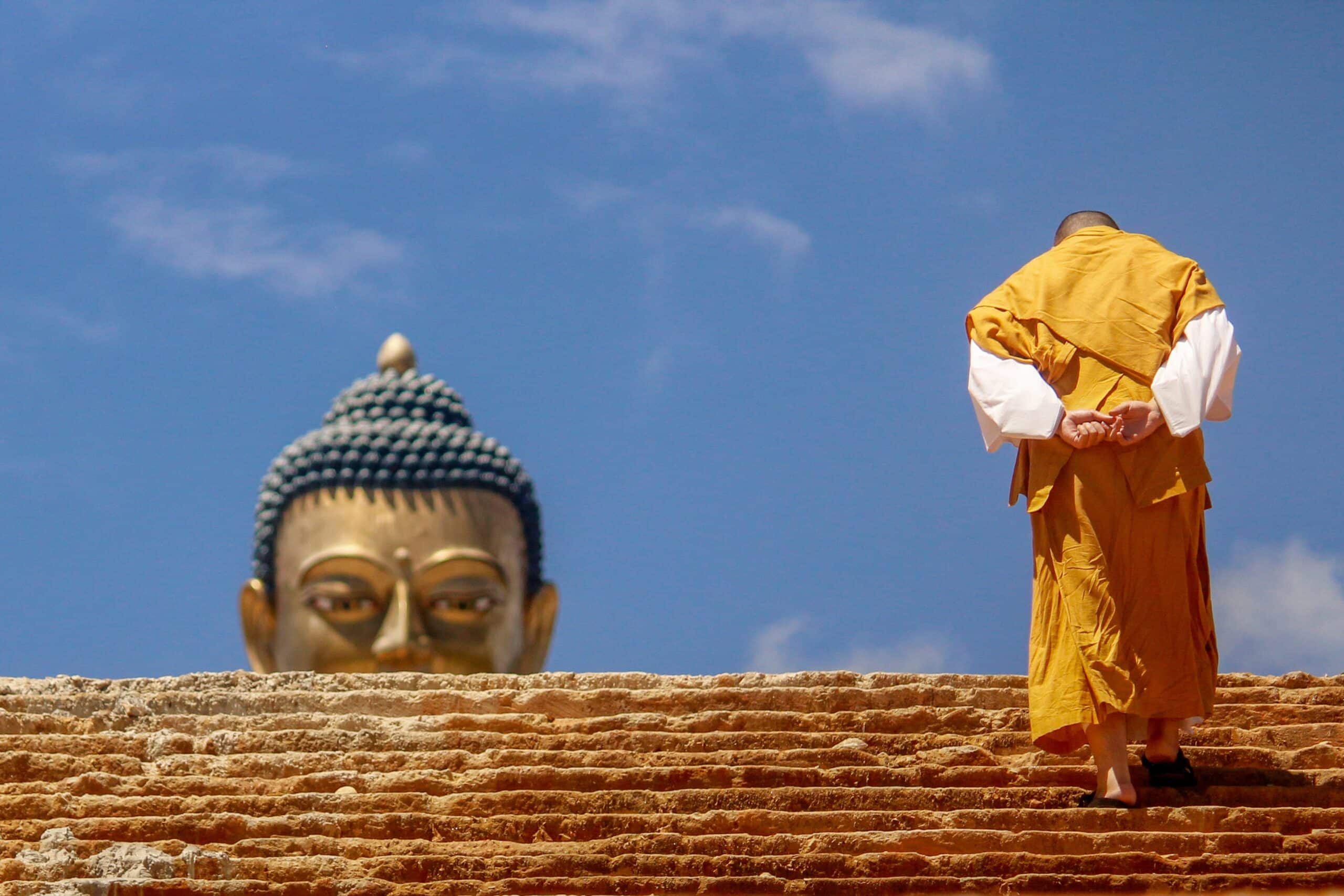What is Buddhism

Contents
- Introduction
- The Founder Gautama Siddharta
- Sacred Scripture
- Teachings of Buddha
- Source

Introduction
Buddhism is a religious and philosophical tradition that began in ancient India. It is based on the teachings of Siddhartha Gautama, known as the Buddha (the awakened one), who lived between the 6th and 4th centuries BCE. Buddhism has spread throughout Asia, Europe, and North America over the past two millennia. Today, it is practised by an estimated 500 million people worldwide. Buddhism is an ancient religion that has been practised for thousands of years. It originated in India and has since spread all over the world, making it one of the most widely practised religions today. Buddhism is based on the teachings of Siddhartha Gautama, known as Buddha, who was born around 563 BCE in India. The core beliefs of Buddhism centre around overcoming suffering and achieving enlightenment through meditation and mindfulness practices.
The central teachings of Buddhism focus on overcoming suffering through ethical living, meditation, and insight into the nature of reality. The Three Jewels of Buddhism are (1) The Buddha—the enlightened teacher; (2) Dharma—the path to liberation; and (3) Sangha—the spiritual community offering guidance along this path. These three jewels provide guidance for Buddhists as they strive to become more mindful individuals and foster a greater sense of compassion for all sentient beings.
The Founder Gautama Siddharta
Siddharta Gautama, sometimes known as the Buddha, is the founder of Buddhism. He is said to have lived in India around 2,500 years ago and his teachings have become some of the most influential spiritual ideas in history. The life of Gautama Siddharta was one of contemplation and reflection, which led him to develop a profoundly original way of understanding the world and our place within it.
Gautama Siddharta’s journey began with a quest for enlightenment through meditation and ascetic practices. It was during this period that he experienced what is known as the “Great Awakening,” an experience that changed his life forever. From this moment on, he devoted himself to teaching others how to access their inner wisdom through meditation.
Sacred Scripture
The Tripitaka is the name of Buddhism’s holy book (called Tipitaka in Pali). In honour of the language in which it was initially written, it is also known as the Pali Canon. The Pali language of ancient India is quite similar to the one that the Buddha himself spoke. Buddhism is based on the teachings of the Buddha. They were initially transmitted orally and eventually combined into two sets of scripture.
The Tripitaka is one set written by the Council of Monks of the Theravada school, and the Mahayana school is another ( the Sutras). They are both similar in concept.
Three Knowledge Baskets
Vinaya Pitaka, sometimes known as “the Discipline Basket,” is a guide for monks and nuns. Nuns have more rules than monks, who are subject to 227.
Buddha’s genuine experiences are recorded in the Sutta Pitaka (the Teaching Basket).
The Higher Doctrine Basket, also known as the Abhidhamma Pitaka, contains an explication of Buddha’s teachings. Most of these are referred to as sutras.
The scriptures for the first two baskets, Vinaya and Sutta, are largely identical in both Mahayana and Theravada Buddhism.
Three categories of Scriptures
Sutras (i.e. discourses) (i.e. discourses)
Vinaya (related to the rules of monastic discipline)
Abhidharma (analytical texts) (analytical texts)
According to Theravada Buddhism, the Pali sutras are the closest to the Buddha’s genuine words. The spirit of the Buddha’s teachings is more closely reflected in Mayahana Buddhist writings. (written a very long time after the Buddha’s death).
Buddhist Sutras
There are 600 Mahayana Sutras that have been preserved in Sanskrit, Chinese, or Tibetan. The Mahayana Sutras were supposedly secret texts that weren’t immediately recorded. Some are credited with being written by Buddhas or other Boddhisattvas.
Buddhism of Tibetan Vajrayana
Tantras are a component of Tibetan Vajrayana Buddhism, in addition to sutras and vinaya.
Teachings of Buddha
The main teachings of Buddhism revolve around the Four Noble Truths: (1) life is suffering; (2) suffering comes from craving; (3) freedom from suffering can be found by eliminating craving; and (4) this elimination is attained by following the Eightfold Path. This path consists of moral conduct, mental discipline, and wisdom which are crucial to leading a good Buddhist life according to their teachings.
The Eightfold Path of Buddhism is a teaching from the founder of Buddhism, Siddhartha Gautama. This path has been interpreted as a guide to enlightenment and right living by practitioners of Buddhism for over 2,500 years.
The eight path consists of eight “right” practices that provide guidance on how to live life in a meaningful and ethical way. These teachings include Right View, Right Intentions, Right Speech, Right Action, Right Livelihood, Right Effort, Right Mindfulness and Right Concentration. Each aspect promotes principles such as non-violence and kindness towards all sentient beings.
Each part of the Eightfold Path is interdependent; one cannot be fully realized without the others. It provides followers with an understanding of how to best lead their lives in order to reach nirvana or liberation from suffering.
Source
Buddhism: A Very Short Introduction by Damien Keown, 2013.


